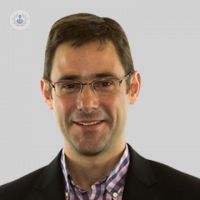Unlocking clear vision: A guide to paediatric ophthalmology
Autore:The world is a captivating place, especially through the eyes of a child. Every colour, shape, and movement is an opportunity for discovery. However, for some children, this journey into the world of visual wonder can be impeded by various eye conditions. In his latest online article, Mr Conrad Schmoll gives us his insights into paediatric ophthalmology, a specialised branch of medicine, that plays a crucial role in ensuring our little ones have a clear vision and a bright future.

Understanding paediatric ophthalmology:
Paediatric ophthalmology is a field dedicated to the eye care of children, from infants to teenagers. Unlike adult ophthalmology, which primarily deals with common eye issues like refractive errors and cataracts, paediatric ophthalmologists are trained to diagnose and treat a wide range of eye conditions unique to children.
Common paediatric eye conditions:
Amblyopia (Lazy eye): Amblyopia is a condition where one eye does not develop proper vision during childhood. Early detection and treatment are essential to prevent permanent vision loss.
Strabismus (Crossed or misaligned eyes): Strabismus occurs when the eyes are not aligned properly, leading to double vision and depth perception problems. Treatment may involve eye exercises or surgery.
Refractive errors: Conditions like near-sightedness (myopia), farsightedness (hyperopia), and astigmatism are common in children. Correcting these issues with glasses or contact lenses is vital to ensure clear vision.
Paediatric cataracts: Although rare, children can develop cataracts. Surgery is often necessary to remove them and restore clear vision.
Retinopathy of prematurity (ROP): Premature infants may develop ROP, which can lead to retinal damage and vision impairment. Timely intervention is crucial to prevent severe vision loss.
Congenital glaucoma: A rare but serious condition, congenital glaucoma causes increased intraocular pressure, potentially leading to blindness if left untreated.
Tear duct obstruction: Blocked tear ducts are common in infants and can lead to excessive tearing and eye infections. In most cases, this issue resolves with time or minimal intervention.
The role of paediatric ophthalmologists:
Paediatric ophthalmologists are not only experts in diagnosing and treating these conditions but are also skilled in communicating with children and their parents. They create a welcoming and comfortable environment, easing the anxiety that children may feel during eye examinations and treatments.
Early detection and intervention:
Early detection and intervention are critical in paediatric ophthalmology. Many eye conditions in children can be successfully treated or managed when identified in their infancy or early childhood. Routine eye exams for children, even those without apparent issues, are crucial for ensuring optimal visual development.
Paediatric ophthalmology is a specialised field that holds the key to a brighter future for our children. By focusing on early detection, accurate diagnosis, and effective treatment, paediatric ophthalmologists empower our little ones to explore the world with clear vision and boundless curiosity. Every child deserves the chance to see the beauty of the world clearly, and through the expertise of paediatric ophthalmology, this vision becomes a reality.
Mr Conrad Schmoll is a highly esteemed ophthalmologist with over 20 years of experience. You can schedule an appointment with Mr Schmoll on his Top Doctors profile.


